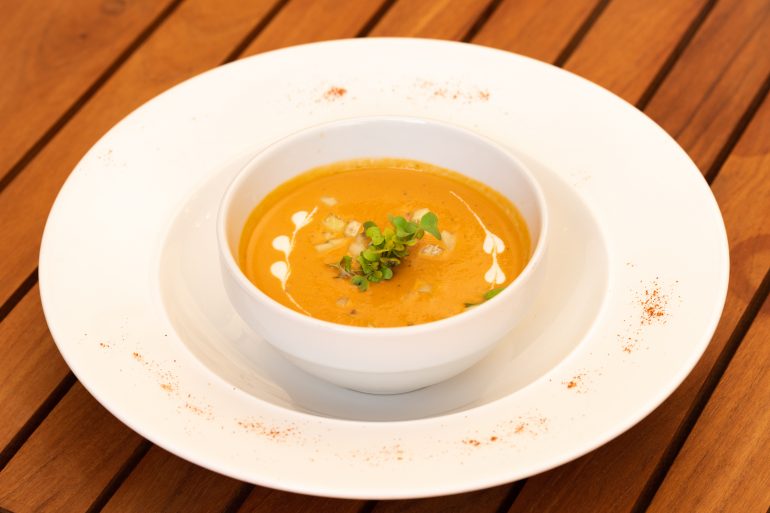Ayurvedic cuisine: what is it and what are the benefits to the organism
Ayurvedic cuisine: why is food important and what are dosha
The wellbeing of the body is also influenced by food. Among alimentary regimes there is the detox diet which improves the depuration of the organism, and Ayurvedic cuisine which brings to the table the principles of Ayurveda, the ancient Indian medicine which helps regain a balance between mind, body and spirit.
“There isn’t a universal recipe to make everyone happy, but one thing is for sure: if you feed badly, you will go in the opposite direction” this is what Italian writer Marco Malvaldi said as he describes, with just a few words, the objective of a healthy alimentation like Ayurvedic cuisine: feeding the body, therefore the soul, in a complete and correct way to respect the organism.
It’s impossible to understand Ayurvedic cuisine if you don’t know the principles of Ayurveda, the millenarian Indian medicine known and put into practice all over the world. The word is formed by ayur, meaning the duration of life or longevity, and Veda, revealed knowledge.
According to Ayurveda, the human body is influenced by three vital energies called dosha, the balance or lack of in these energies influences the health, or ill-health, of an organism. The three dosha are indicated with three names: Vata (air and ether), Pitta (fire and water) and Kapha (water and earth).
It is possible to identify the psychophysical predisposition of an organism with dosha and a consequent alteration between vital energies which can be rebalanced with five different Ayurvedic therapies done exclusively by Ayurveda specialists such as Dr Bauhofer, one of the most important specialist outside of India:
- Treatments with medicated oils or powders
- Natural herbal substances in the form of tea or pills
- Alimentary advice based on the personal dosha
- New daily habits
- Specific physical exercise like hatha yoga, relaxation techniques and deep breathing
For the body and mind to live in harmony, it’s also necessary to pay attention to food. Let’s discover together the secrets in Ayurvedic cuisine and how it can help us to feel better.
Ayurvedic cuisine: 3 typologies of food and 6 different flavors
“Let food be your medicine and your medicine be food” is Hippocrates warning. He is considered the creator of medicine and also the idea on which Ayurvedic medicine is based as it identifies three types of physiques corresponding to determined foods:
- Satvici: food contributing to the wellbeing of the body and stimulate concentration. In this category there is fruit, vegetables (except for chilies), garlic, onion, mushrooms and tubers, whole grain cereals which haven’t been processed in any way, raw oil, walnuts, almonds, not pasteurized dairy products from healthy animals, basil, ginger, turmeric, cardamom, coriander, anise and cumin.
- Rajasici: they are products with a stimulating effect and produce gas and heat also arousing a state of anxiety and agitation. In this group there are coffee, tea, chocolate, fizzy drinks, hot spices and fermented foods.
- Tamasici: they create an unbalance, damage the organism and prevent concentration and spiritual development. At the top of this list there are white refined sugar, fried foods and those containing chemical preservatives therefore also alcoholic drinks, pharmaceuticals, drugs, tobacco, meat, fish, eggs, garlic, onions and mushrooms.
The balance of meals in Ayurvedic cuisine needs to take in consideration the six Rasa, in other words the flavors. If these are distributed well within a meal they contribute to the wellbeing of the organism, or in the contrary they might alter the dosha.
Rasa are distinguished by:
- Sweet: has a calming effect and is connected to products like rice, cereals, sweet potatoes and chapati.
- Acid/sour: has a slightly heating effect, helps digestion and includes citrus fruits, acidic fruits, grapes, yogurt, vinegar and food kept in vinegar.
- Salty: stimulates the adrenal glands and digestion. This group includes salt, sea weeds and packaged products.
- Spicy hot: stimulates the metabolism and in this category there are chilies, garlic, onions, hot spices.
- Sour: eliminates swelling and is connected to foods like salads, vegetables with dark green leaves and some aromatic herbs.
- Astringent: purifies the blood and helps to digest, it includes products like pomegranate, blueberries, wild apples, quinces, unripe fruit, cereals, beans and some vegetables.
Ayurvedic cuisine: 5 rules to follow after meals
Ayurvedic cuisine involves a balance of specific foods and a series of behaviors to have at the table and after meals.
Here are five rules to follow:
- Never overeat and wait for a complete digestion before the consumption of another meal
- Avoid drinks which are too cold during meals
- Prefer light meals in the evening time
- After eating remain seated and relax a few minutes before attending your daily tasks






